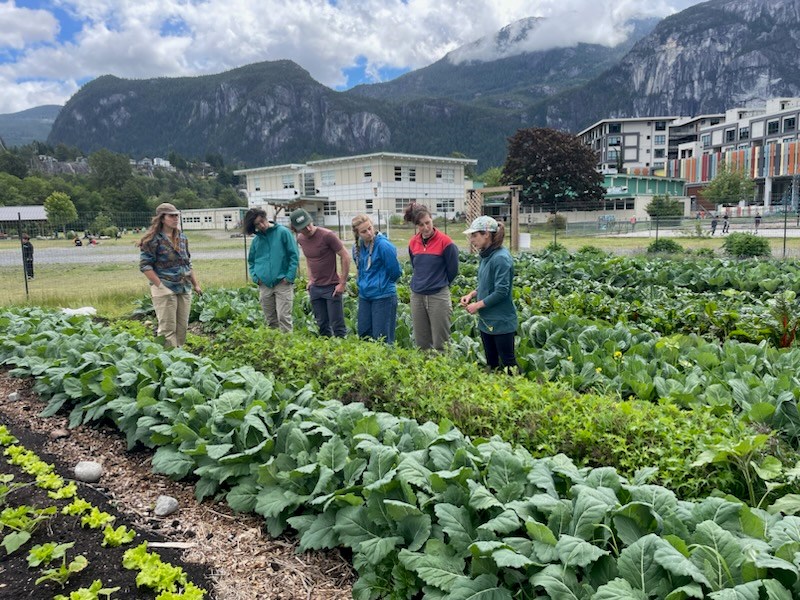It’s better to be for something than against something.
That’s the guiding ethos behind the Youth Climate Corps British Columbia, a multi-million dollar endeavour that aims to train and deploy young people working to address climate change. While some may picture environmentally-minded folks blocking traffic in a protest, or leading a blockade against a logging company, the climate corps pursues proactive projects that aim to empower youth to make the community stronger and more resilient.
“I think people are really seeing the impacts of climate change in a tangible way right now. We’re seeing record forest fires, heat domes—it’s becoming hard to ignore. I see with young people the impact on mental health and climate anxiety in a real way,” said the corps' executive director Ben Simoni.
“We need to bring more people on board, and we don’t operate with a scarcity mindset. We tell people that we’re not against things; we’re for them. We’re for young people becoming key stakeholders and decision-makers with this climate crisis, because it will be affecting them for the rest of their lives. We’re for giving them not just a seat at the table, but getting them involved in meaningful ways.”
A hands-on approach to heating your home
How airtight is your home?
That may be a question that never occurs to you, but for the participants in the climate corps it’s a crucial way you can address individual energy consumption. If air is escaping through cracks in your ceiling or spaces between your floorboards, that means heat is escaping as well. In the past weeks, members of the corp have been attending training where they learn the best ways to retrofit homes and make them environmentally friendly.
In Squamish, the corps is led by Nicole Kilistoff and Aida Goma Petit, who both took their positions in May. So far, they’ve embarked on numerous projects with the District of Squamish, educating the participants on the importance of networking with community partnerships, while also helping out at a local farm and teaming up with the Squamish Climate Action Network. But so far it’s the air sealing training that has been most hands-on.
“We brought on RDH Building Science to do the training, and they’re showing us the best ways to do these retrofits. They give us the background on why we’re doing it and then focus on the actual hands-on application, with different tape and caulking and other materials,” said Kilistoff.
“Through our partnership with the District, this is something that actually exists in Squamish. Homeowners can apply to get funding or assistance to retrofit their homes. So we see who applies and then see what we can do to make their house more efficient.”
Kilistoff thinks it’s a perfect example of the sort of positive change the corps aims to create.
“It’s a simple way to make older houses more efficient, and when they transition to heat pumps, they can use a smaller and less expensive heat pump.”
Climate change and colonization
How did we get here?
Many people see the overwhelming effects of climate change, but few think about the most foundational cause—the colonial culture that led to over-consumption and waste in the first place. For Keenan Miles, a member of the climate corps who studied climate change in university, it’s that element of the discussion that often gets overlooked.
“I think a really important part of addressing climate change is taking the social aspects into account. In Canada, that looks like listening to Indigenous voices and local nations,” he told The Squamish Chief.
“The question that guided my studies was ‘how did colonization lead to climate change?’. Ideally we need Indigenous-led organizations to work on getting the land back and ecosystem restoration, with a focus on equitable approaches to climate.”
Miles is ready to roll up his sleeves.
“I’m excited to help the District of Squamish with engagement for rewriting our climate action plan, and I’m excited to work with other non-profits because it seems like they’re doing a lot of cool stuff in town. These community initiatives make us more climate resilient,” he said.
His feelings were echoed by another member of his cohort, Michela Phillips, who has worked previously in addressing plastic pollution and creating sustainable agriculture. She would like to see the industrial wood waste in the area addressed, and is passionate about food sovereignty.
“My background is in microbiology, agriculture and food systems, so I see soil as having potential for sequestering carbon and creating better food systems. We also need to see the decarbonization of our buildings and our transportation as we move away from fossil fuels, and I’m interested in some more unconventional things we might not think of, like reducing food waste,” she said.
She also noted that Squamish operates its own landfill, which will create a plethora of opportunities.
The participants will be engaged with a number of different projects, choosing themselves which ones they want to throw their weight into. So far, the province-wide program has completed 7,000 hours of climate action since 2020. Simoni believes this will transform the participants into the leaders of tomorrow.
“I’ve seen the impact the climate crisis has had on young people, but there’s the flip side where I’ve seen how impressive it was how they adapted to leadership opportunities. They’ve faced adversity and learned new things,” he said.
“And it’s the perfect combination of introducing skill sets and leadership so that young people can find solutions to the climate crisis.”
•Please note that this story was corrected after it was first posted to reflect the accurate spelling of Michela Phillips's name.




